Wednesday, November 11, 2015
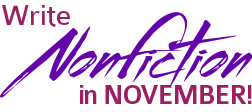
This post is part of the Write Nonfiction in November Challenge (WINFIN), also known as National Nonfiction Writing Month (NaNonFiWriMo). To find out more or participate,
click here.

Photo courtesy of dny3d|stockfresh.com
You decided to write a nonfiction book. Maybe you’ve produced a complete manuscript for a memoir or a few chapters of a prescriptive nonfiction or creative nonfiction work. You took the time to explore the different ways in which you might publish your book—traditional publishing or self-publishing—and chose your publishing path. Now, what? It’s time to learn how to succeed as an indie author or traditionally published author.
Each publishing path has different challenges and requirements. No matter how you bring your book to market, you must know what these are and equip yourself to take them on or meet them.
For that you need a mentor or someone to offer insider secrets to publishing success. In this post, discover from six experienced publishing experts the skills you need and the actions required to achieve your goal of successful authorship.
Traditional Publishing
First, I asked three traditional publishing experts to answer this question:
What are your best tips for how to become a successful traditionally published nonfiction author?Their answers follow. (For self-publishing tips, see below.)
Sheree Bykofsky
- Wait until you are ready. Do not approach an agent with an unfinished or unfocused project. Wait until you have a polished manuscript or proposal.
- Take the time to make your query letter perfect. Everything anyone does can always be better, but there is no excuse for imperfect grammar, punctuation and business style.
- Be persistent and have a thick skin, and don’t use cliches like “have a thick skin.”
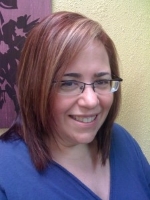 Sheree Bykofsky
Sheree Bykofsky (
Shereebee.com) is the founder of Sheree Bykofsky Associates, Inc., literary agency and the author of over 30 books, including
The Complete Idiots Guide to Getting Published, fifth edition.
Michelle Howry
- Develop your unique point of view. This means knowing what else is out there in your category and how your book is different / better / special. Rather than try to convince an editor or agent that there’s nothing out there like your book (which is probably wrong and not helpful to them as they prepare to discuss the book with their team), help them position the book within the landscape of what other books are out there already and selling.
- Find your tribe. Part of an author’s job (especially for nonfiction) is to know who their audience is and how to reach them. If an author comes to us with a “tribe” of readers or fans (in the form of a mailing list, a social-media following, or some other direct contact to people who already know about their work), that means a great deal to us. That tribe doesn’t always have to be huge, but it does need to be real.
- Write an amazing book. It’s last but it should be first – knock our socks off with your writing, and we’ll want to do everything we can to get that message out into the world.
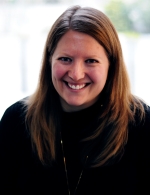 Michelle Howry
Michelle Howry specializes in commercial nonfiction. Her bestsellers at Touchstone include popular history books like
The Girls of Atomic City by Denise Kiernan, narrative science titles like
What the Dog Knows by Cat Warren, diet category-killers
The New Atkins for a New You and
The Forks Over Knives Plan, Olympic gold medalist Dominique Moceanu’s memoir
Off Balance, pint-sized Hollywood diva Kristin Chenoweth’s
A Little Bit Wicked, and the
Bro Code franchise of books (with more than 1.5 million copies in print). Michelle acquires platform-driven practical nonfiction in the areas of self-help, personal finance, psychology, relationships, cookbooks, and health including
The 7 Habits of Highly Effective Teens by Sean Covey. She also acquires narrative nonfiction in categories such as popular history, biography, popular science and technology, and some celebrity memoir including
The End of the Perfect 10, a look at the changing face of competitive women’s gymnastics.
Michael Larsen
- Read as many books as you can like the one you want to write so you can find successful books and authors to use as models, and you can set literary and publishing goals for your book.
- Write a manuscript for a memoir, or a proposal for general nonfiction that you get feedback on as you write to help ensure that every word is right and that your work has the impact you want it to and that many knowledgeable readers assure you will excite the publishers you want to attract.
- Build your visibility in your field, online and off, with potential book buyers, while you build and maintain communities of the people you need to succeed.
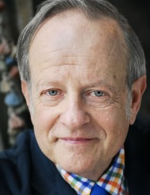
Born and educated in New York City, Agency Co-Founder
Michael Larsen worked in promotion for Bantam, William Morrow, and Pyramid (later assimilated into Berkley). He and his wife Elizabeth Pomada started Larsen-Pomada Literary Agents in San Francisco in 1972. They are members of AAR and have sold books to more than 100 publishers.
Mike is eager to find nonfiction books that will excite big and midsize houses: how-to’s, self-help, business, personal finance, popular culture, biography, current affairs, history, health, medicine, spirituality, inspirational books, trends, technology, the future, and other books with practical, social, or literary value.
He is the author of the third editions of How to Write a Book Proposal and How to Get a Literary Agent. With Jay Conrad Levinson, Rick Frishman, and David Hancock, he is co-author of the second edition of
Guerrilla Marketing for Writers: 100 Weapons for Selling Your Work. Mike also offers a consulting service for nonfiction writers who are not clients.
Self-Publishing
I also asked three self-publishing experts to answer this question:
What are your best tips for how to become a successfully self-published (indie) nonfiction author?Their answers follow:
Joel Friedlander
- Become accustomed to thinking of yourself as a publisher when you’re not actively writing your books. Publishers create products for a specific segment of the reading public, know that market very well in terms of what kind of books they buy, why they buy them, what they are looking for in those books, and the preferences of your readers in terms of the content of your books as well as the format in which you produce them and the prices that you set. Writing is usually seen as a creative endeavor. Becoming a successfully published indie nonfiction author means gaining the ability to be just as effective in business as you are as a writer.
- Find a way to get into an ongoing conversation with people in your field. One of the best ways to do this is with a blog where you can learn the basics of content marketing, by far the most effective—and enjoyable—way to find the exact readers who are looking for the expertise you already have. This ongoing conversation will provide you with amazing direct market intelligence, and if you engage with it, will lead you directly to the books that your readers want to buy.
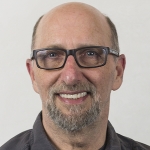 Joel Friedlander
Joel Friedlander (
@JFBookman) is an award-winning book designer, blogger, and writer. He’s been launching the careers of self-publishers since 1994 from his book design and consulting practice at Marin Bookworks in San Rafael, California. Joel is the author of
A Self-Publisher’s Companion: Expert Advice for Authors Who Want to Publish, and the coauthor of
The Self-Publisher’s Ultimate Resource Guide. He is a columnist for
Publishers Weekly, and
Writer’s Digest has named him as one of the 10 people to follow in book publishing. Joel writes
TheBookDesigner, a popular blog on book design, book marketing and the future of the book. He’s also the founder of The Self-Publishing Roadmap, an online, video-based training course in book publishing. In 2013, with Tracy R. Atkins, Joel launched
BookDesignTemplates.com, where he provides pre-designed book templates for Microsoft Word and Adobe Indesign, as well as book marketing tools for authors. Joel is a past president of the Bay Area Independent Publishers Association.
Holly Brady
- Know why you’re publishing: Many nonfiction authors publish for reasons other than making money from book sales. Most are looking to increase authority in their chosen fields, which they then monetize through workshops, consulting gig, speaking engagements and the like. Know why you publish. It will help you set your financial goals.
- Do the math: Create a business plan. Research the fees for the editors, proofers, indexers, designers, stock photos, ebook converters, etc. you’ll need for your project. Those are your expenses. Then use the CreateSpace royalty calculator (Google it!) to figure your revenue when one softcover book sells. Divide the former figure by the latter and you’ll get the number of softcover books you’ll have to sell to break even. (Numbers differ for ebooks and hardcover books). This exercise moves you from the role of author to publisher, and forces you to confront this question: Do you—the publisher—think it wise to invest all that money into you—the author? (Answers depend on what your goals are.)
- Publish in all formats—because each has its own audience: If you’re going to all the work to publish a book, consider bringing it out in hardcover (Ingram Spark), softcover, and ebook. Once your files are ready to be uploaded, it’s relatively easy to do all three. Then take a look at publishing an audiobook through Amazon’s ACX. While it’s a little more difficult (you have to find the right narrator), audiobooks are the fastest growing book segment today.
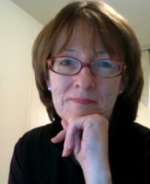 Holly Brady
Holly Brady, former director of Stanford Publishing Courses, now works with serious writers who are interested in using new media tools to publish their own books. She also teaches self-publishing workshops through Stanford Continuing Studies.
www.hollybrady.com Carla King
- Start by targeting a niche, saturate it, and radiate out toward more general audiences. If your book serves a need (whether it’s education or entertainment), and it is professionally edited and designed, its popularity will grow via word of mouth. Recognize and cultivate each new audience segment with care, using the tools they use, from a particular social media app to personal appearances.
- Use metrics to discover where your book gets noticed, what blog posts and articles win audience response, and what content gets no interest at all. Use google analytics, bitly, and any other analytics you can find in the tools you use to publish and promote.
- Don’t give up too soon. One of the wonderful things about self-publishing is that your book is never backlisted, so you can promote it for a long time, selling everywhere and trying new things. Though big distribution with services like IngramSpark, BookBaby, Smashwords and Amazon is awesome, don’t stop there. Use smaller, more personal publishing services like Gumroad, Leanpub, PressBooks, and even your own website.
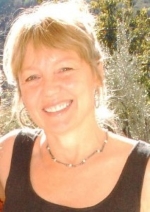 Carla King
Carla King is an adventure travel author and self-publishing expert. In 2010 she founded
SelfPubBootCamp.com, an educational program of books and workshops, and this year she created
AuthorFriendly.com, a service that helps authors with formatting, distribution, websites, and other geeky aspects of publishing.
Take the Challenge!
To learn more about how to take the WINFIN Challenge and participate in NaNonFiWriMo,
click here.
Are you ready to take the challenge? If so,
click here. When you submit your name and email address, you “register” for the event and gain access to the WNFIN forum.
The post
17 Tips for Publishing a Nonfiction Book Successfully appeared first on
Write Nonfiction NOW!.
Nina Amir, the bestselling author of How to Blog a Book and The Author Training Manual, is a speaker, a blogger, and an author, book, blog-to-book, and high-performance coach. Known as the Inspiration to Creation Coach, she helps creative people combine their passion and purpose so they move from idea to inspired action and positively and meaningfully impact the world as writers, bloggers, authorpreneurs, and blogpreneurs. Some of Nina’s clients have sold 300,000+ copies of their books, landed deals with major publishing houses and created thriving businesses around their books. She is the founder of National Nonfiction Writing Month, National Book Blogging Month, and the Nonfiction Writers’ University. As a hybrid author she has published 15 books and had as many as four books on the Amazon Top 100 list at the same time.